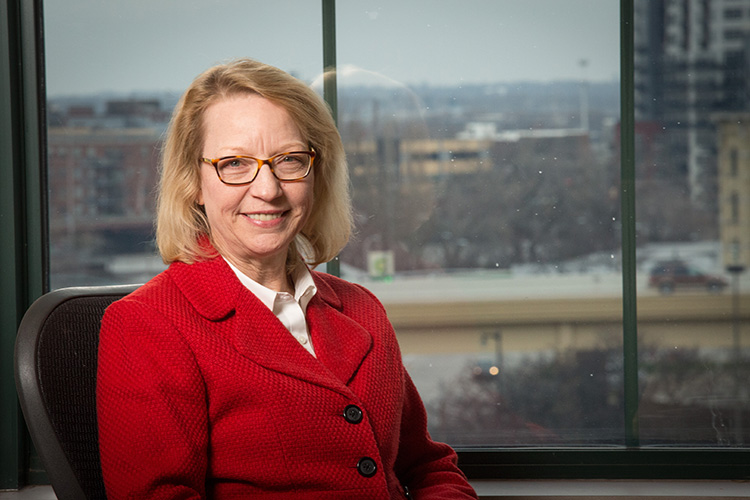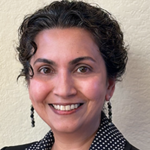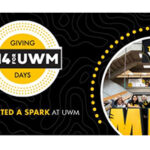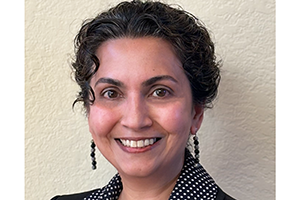Paula Rhyner, a professor of communications sciences and disorders, made the trip downtown in July to take the helm at the School of Continuing Education as deputy to the provost for continuing education and outreach. Rhyner came to UWM in 1983, most recently serving as interim dean of the College of Health Sciences.
She recently took time out to discuss her role at the school, its evolution and its role in the community.
Before coming the School of Continuing Education you’d spent more than 30 years in traditional academia on the Kenwood campus. What was the transition to Continuing Education like?
It definitely was change. There are so many differences being here compared to being in one of the academic colleges on campus. One is that here I’m working with academic staff; it’s different not working with the faculty directly.
But I’ve also had the opportunity in this role to expand the existing collaborations on continuing education that we’ve had with schools and colleges, and also to develop new programs they might want to offer in partnership with us.
Would you say that’s something of a change in the way Continuing Education operates?
I think it’s a difference of degree. Some schools and colleges are already partnering with us; others have in the past and now maybe are focused on offering continuing education programs through their own schools and colleges directly.
There’s a good deal of value in building those partnerships because at SCE we’ve created infrastructure and processes and systems that are geared specifically to managing, offering and developing continuing education courses. We can offer schools and colleges services that that we’re organized for and adept in.
Your mission is quite distinct from the main campus, but complementary.
Yes, a primary role of academic schools and colleges is preparing students for their careers. In SCE, we focus on community involvement in terms of providing professional development and outreach services for individuals, businesses and organizations within the community.
In many professions there’s a requirement for a specified number of hours of continuing education in order to maintain certification or licensure.
And people simply need to stay abreast of new developments in their fields and to be able to acquire advanced knowledge and skills beyond what they acquired as part of their degree programs.
Community engagement is sort of in the institutional DNA, isn’t it?
We’re certainly engaged for the purposes of professional development. We’re also engaging those professionals in providing professional development for others. It makes sense for us to recruit as instructors professionals who are actually within business or industry or healthcare and have expertise within a particular area.
Having those partnerships helps us ensure that we are innovative, that we are entrepreneurial, that we are creative, and that our continuing education really is cutting edge, innovative.
And we also have an outreach mission as well: We engage with nonprofits that are providing services to certain populations; part of our mission is to make sure that we are providing training to those service providers.
You also serve people who are retooling for new careers.
There are a couple of areas where we see that sort of thing happening. During the recession, many individuals found themselves out of a job, having built up quite a bit of experience and expertise, but not having the formal training to qualify for another position. We have certificate programs to address those needs and to help dislocated workers prepare for new positions.
We also have military veterans contacting our non-degree programs. They are not necessarily interested in pursuing a degree program at this time, but they want some additional training in some area – say, engineering or business – that may eventually lead to them to think, “I think I’d like to get a degree.”
We’re also partnering with the MAVRC, the military and veterans program on campus. This is a newer area where we can build partnerships with the Kenwood Campus.
We’re in a tough fiscal environment. How is this affecting your plans for the future?
We’re pretty lean right now, as are other schools and colleges at UWM, but we are focused on being creative in the ways we develop and manage programs.
We’re also working to identify growth areas, such as offering customized training. For example, Johnson Controls needs training for their employees: They don’t want to create an in-house program, so they have asked us to do that. That’s definitely a growth area.
Another area that’s really growing for us is the women’s leadership conference that we hold every spring. We have nationally and internationally known speakers for that conference. And, by the way, this isn’t just for women: Companies are sending their male employees as well.
It’s a big tent, isn’t it?
We are the largest provider of non-credit continuing education in Southeastern Wisconsin. We offer over 1,000 programs that appeal to all interests and ages from 5 to 95. We have our College for Kids and Teens and we have our lifelong learning program, OSHER. That’s part of the complexity of the School of Continuing Education.







